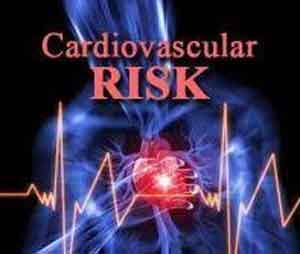- Home
- Editorial
- News
- Practice Guidelines
- Anesthesiology Guidelines
- Cancer Guidelines
- Cardiac Sciences Guidelines
- Critical Care Guidelines
- Dentistry Guidelines
- Dermatology Guidelines
- Diabetes and Endo Guidelines
- Diagnostics Guidelines
- ENT Guidelines
- Featured Practice Guidelines
- Gastroenterology Guidelines
- Geriatrics Guidelines
- Medicine Guidelines
- Nephrology Guidelines
- Neurosciences Guidelines
- Obs and Gynae Guidelines
- Ophthalmology Guidelines
- Orthopaedics Guidelines
- Paediatrics Guidelines
- Psychiatry Guidelines
- Pulmonology Guidelines
- Radiology Guidelines
- Surgery Guidelines
- Urology Guidelines
Attention cardiologists-Sharing pictures of silent atherosclerosis with patients lowers CV risk,finds Lancet study

A massive randomized trial of over 3000 people has provided evidence that ultrasound-based pictorial presentation of silent atherosclerosis to patients and their doctors resulted in a decreased risk of cardiovascular disease one year later, compared to people receiving usual information about their risk. The study was published in the journal Lancet.
Smoking cessation, physical activity, statins, and antihypertensive medication to prevent cardiovascular disease are among the most evidence-based and cost-effective interventions in health care. However, low adherence to medication and lifestyle changes mean that these types of prevention efforts often fail.
Professor Ulf Naslund and associates conducted a study to investigate whether ultrasound-based pictorial information about subclinical carotid atherosclerosis, targeting both primary care physicians and individuals, improves prevention.
Read Also: Whole-fat dairy provides protection from cardiovascular disease and mortality : Lancet
The study included 3532 individuals who were taking part in the Västerbotten County (Sweden) cardiovascular prevention programme who underwent vascular ultrasound investigation of the carotid arteries. Half (1749) were randomly selected to receive the pictorial representation of carotid ultrasound, and a half (1783) did not receive the pictorial information.
Participants aged 40 to 60 years with one or more cardiovascular risk factors were eligible to participate. All participants underwent blood sampling, a survey of clinical risk factors and ultrasound assessment for carotid intima-media wall thickness and plaque formation. Each person in the intervention group received a pictorial representation of plaque formation in their arteries, and a gauge ranging from green to red to illustrate their biological age compared with their chronological age. They then received a follow-up call from a nurse after 2-4 weeks to answer any questions. The same pictorial presentation of the ultrasound result was also sent to their primary care doctor.
The primary outcomes, Framingham risk score (FRS) and European systematic coronary risk evaluation (SCORE), were assessed after 1 year among participants who were followed up.
Read Also: Cardiovascular Disease in elderly associated with Hearing Loss
The investigators found that at one year follow up, the cardiovascular risk score for all participants (3175 completed the follow up) was calculated showing differences between the two groups; SCORE increased by twice as much in control group compared to the intervention group. Improvements were also seen for total and LDL cholesterol in both groups, but the reduction was greater in the intervention group than in the control group. A graded effect was also noted, with the strongest effect seen for those with the worst results.
Importantly, the effect of the intervention did not differ by education level, suggesting that this type of risk communications might contribute to a reduction of the social gap in health. The findings come from a middle-aged population with low to moderate cardiovascular disease risk.
The authors warrant the need for further research to understand whether the results are sustainable beyond one year and whether the intervention will lead to a reduction of cardiovascular disease in the long-term.
For full information log on to https://doi.org/10.1016/S0140-6736(18)32818-6

Disclaimer: This site is primarily intended for healthcare professionals. Any content/information on this website does not replace the advice of medical and/or health professionals and should not be construed as medical/diagnostic advice/endorsement or prescription. Use of this site is subject to our terms of use, privacy policy, advertisement policy. © 2020 Minerva Medical Treatment Pvt Ltd